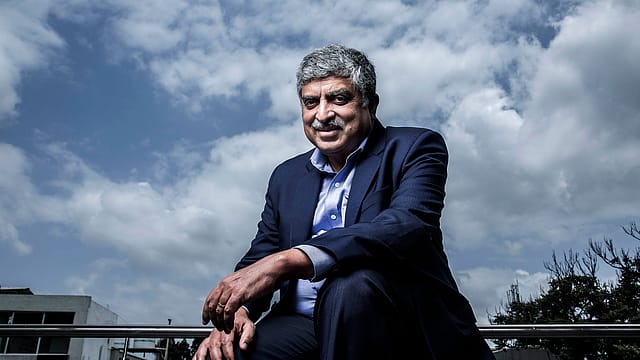DPI reshaping India into ‘one mega economy’: Nilekani
ADVERTISEMENT

The digital public infrastructure is taking India from multiple micro-economies to “one mega economy, says Nandan Nilekani, chairman and co-founder, Infosys and founding chairman, UIDAI (Aadhaar).
Nilekani’s session, on the concluding day of the three-day B20 Summit 2023 organised by the Confederation of Indian Industry (CII) in New Delhi, was broadly centred around “India Stack” that has laid the groundwork for the formation of a comprehensive digital public infrastructure (DPI).
Fundamentally, says Nilekani, India is going from an offline, informal, low productivity, multiple set of micro-economies to “a single online, formal, high-productivity mega economy” – a trend that will continue over the next 20 years.
He believes this has been possible by a new approach to solving society’s problem, through digital public infrastructure (DPI).
“This essentially enhances the ability of the country to use digital technology at a population scale to transform society,” says Nilekani.
January 2026
Netflix, which has been in India for a decade, has successfully struck a balance between high-class premium content and pricing that attracts a range of customers. Find out how the U.S. streaming giant evolved in India, plus an exclusive interview with CEO Ted Sarandos. Also read about the Best Investments for 2026, and how rising growth and easing inflation will come in handy for finance minister Nirmala Sitharaman as she prepares Budget 2026.
Nilekani says India has transformed in many ways over the last several years and digital transformation is at the heart of its economic growth.
Explaining the fundamentals of DPI, he says it has a number of building blocks and each block does one thing well, but all blocks talk to each other and interoperate. “When these blocks come together, they create all kinds of solutions at population scale,” says Nilekani.
He says the trio of Aadhaar, KYC, and Jan-Dhan Yojana have driven the massive financial inclusion story in India, and that this transformation began with Aadhaar.
“The idea was to give a digital identity to everyone and today 1.3 billion Indians have digital IDs. It provides online authentication of IDs with fingerprint, iris, OTPs, face. That system does 80 million transactions a day,” he adds.
According to Nilekani the year 2016 was a seminal year when India reached the 1-billion mark in Aadhaar cards.
He also talks about the UPI platform transforming the digital payment system in India. “In April 2016, the new payment system UPI was launched. In 2016, JIO was launched, and in the same year, the RBI took a decision to launch an account aggregator system,” says Nilekani.
Nilekani says the UPI platform presently stands as the world’s largest payment platform, facilitating a staggering 9.96 billion transactions each month. Notably, with a user base of 350 million, the UPI system allows for digital payments through QR codes at approximately 50 million merchants nationwide.
“We believe this DPI approach will help in climate adaptation and mitigation. From individual cash transfers to those affected by climate change to managing the electric vehicle charging station grid, DPI is an approach that has many uses for the challenges we face,” says Nilekani.
He highlights the development of the DPI ecosystem in India was enabled by the IT intellectual capital and start-up ecosystem. “This combination of talent density, start-up density and the IT sector have come together to make DPI a success,” he says.
On receiving global recognition, Nilekani says the increasing popularity of DPIs is seeing momentum to carry them to 50 countries in the next five years.
